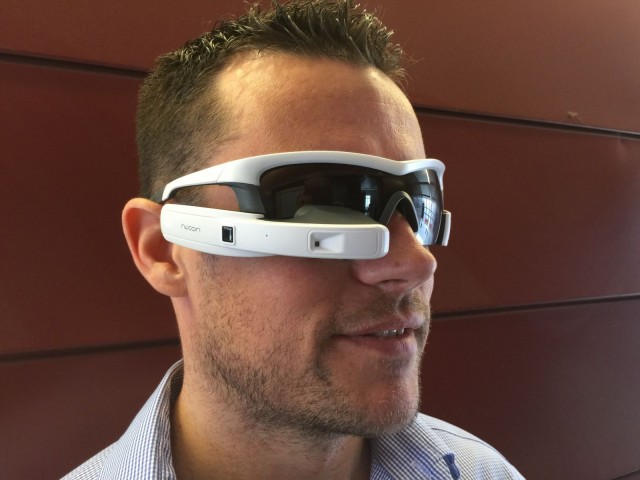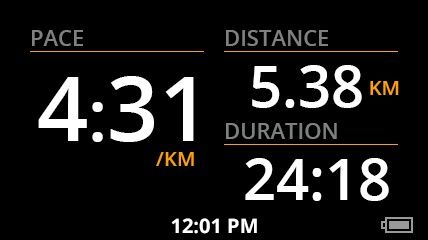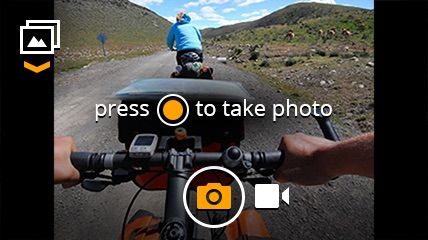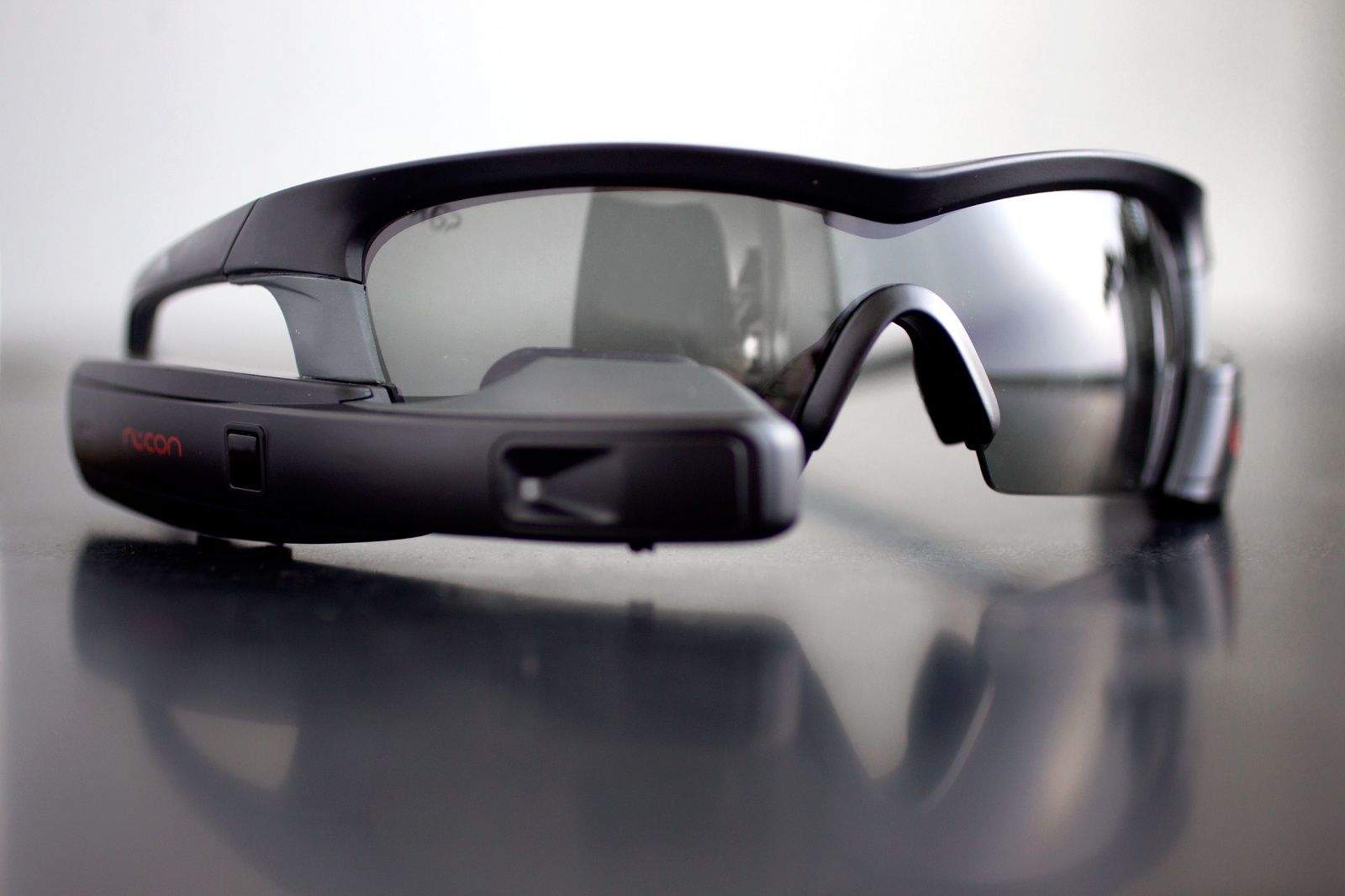You rarely see Google Glass anymore, but if Recon Instruments has its way, you’ll be seeing plenty more head-mounted displays in the future.
The Recon Jet, launched Thursday, is a pair of smart eyeglasses for sporty activities like running and biking. Bristling with sensors, the device shows all kinds of biometric data and social stats on its tiny heads-up display. Paired with a smartphone, it can take pictures and video, send and receive status updates, find friends and family on the piste and much more.
But sports is just a start. If Recon is successful — and that’s a big if — we may be seeing smart glasses in a lot more places. Recon is betting hard that the face is the place for smart wearables.
“We do not want to be just sports,” said Recon CEO and co-founder Dan Eisenhardt during a visit to the Cult of Mac offices recently. “We want to be a platform.”
The company has its work cut out for it. Wearables have been hyped as the “next big thing” by true believers for years now, but in reality they are the lepers of the tech industry. The coming release of the Apple Watch will likely boost adoption of data-capturing wearables, but head-mounted displays remain a tough sell.

Still, Recon is streets ahead of Google, which recently put its high-profile Glass experiment on hiatus after a less than stellar reception by the public.
Eisenhardt says the Recon Jet is another step in a plan to make face-mounted displays popular.
“There’s a battle between the wrist and the face, and the wrist is winning right now but it’s still early days,” he said.
Recon already has a successful heads-up display business: The Recon Snow2, for winter sports, is a big hit. Available as a clip-on or built into co-branded goggles from Oakley, Smith Optics and others, the Snow2 is sold in stores worldwide including 250 Apple locations.
Based on the response from Snow2, Eisenhardt is convinced the HUD is a winning form factor for wearables. “Just the ability to take a call without taking your hand out of your pocket,” he said. “It’s a no-brainer. It adds so much value.”
The big problem, of course, is getting people to wear a big pair of Terminator glasses.
Available in black or white for $699, the Recon Jet starts shipping Thursday and is available online.
It has a widescreen 16:9 display, which is located just below the right eye. I found it somewhat obtrusive. It creates a pretty big blind spot, but Eisenhardt assured me you soon get used to it. It’s not a hindrance for most activities, he said.
The screen is quick and easy to glance at. It’s very easy to see your heart rate or how fast you’re moving — easier than glancing at your watch or a cycle computer on your handlebars. The screen even monitors your eye to save power, turning on when you glance at it and off when you look away.
The Recon Jet has a long list of built-in sensors and communication protocols, among them an accelerometer, altimeter, gyroscope, compass, barometric pressure, GPS, Bluetooth 4.0 and Wi-Fi.
All this tech lets it work with a wide variety of devices and data sources. Fitness stats can be uploaded to services like Strava and RunKeeper. It’s ANT+ compatible, and it’ll play nice with fitness devices from competitors like Garmin, the established industry giant.
“People have been using those devices for 10 years and they don’t want to give that up,” said Eisenhardt.



Beware the Glasshole effect
The problem is the Glasshole effect. The Jets are big and bulky. They stick a very obvious camera in peoples’ faces. They look idiotic.
But maybe not on a bike, where large, sporty eyewear is the norm and you’re wearing a helmet anyway.
“For cycling, there’s no issue with this form factor,” said Eisenhardt.
The battery lasts about four hours and is interchangeable. It sits on the opposite side from the eyepiece to balance the weight.
You interact mostly via a button on the side that detects directional swipes: Swipe down to navigate one way, swipe up for the other. It works with gloves.
Overall, the interface is pretty easy-to-use and intuitive. The mapping app looks nifty; maps load quickly and are responsive. It’ll be impossible to get lost with these on, and of course, for a device for outdoor sports, they work offline as well as on. The Jet connects to a well-designed and highly customizable Recon Engage app (iOS and Android) that provides stats galore.
The ReconOS is Android-based, and has an open SDK, so developers can write third-party apps that will be available shortly.
There’s an upcoming sailing app that will pull in real-time data like wind speed and sail position; another will tell athletes when to drink and eat based on their real-time biometrics. I know personally from endurance bike riding that this kind of app would be enormously helpful.
The app library will be key to getting wider adoption for wearables like the Recon Jet. Recon is starting with fitness, and hoping to expand into other areas as newer models come out.
“We want to be smaller and we’re going to keep making it smaller and smaller,” Eisenhardt said.
Recon has its eyes on enterprise — maintenance, construction, warehousing, assembly instructions, training and so on.
“Oil and gas,” he said, “that’s a huge market.”
Eisenhardt argues that the cloud, fitness trackers and connected devices are coming together to creae a huge opportunity for a variety of wearables — on your wrist, face or elsewhere.
“You’re going to see an explosion of applications,” he said. “It’s an ecosystem that’s coming together with open standards and open data. The question is, how are you going to access it?”
For now, Apple has the lead, but I can see there are lots of applications for a good, well-designed and well-made heads-up display like Recon’s, especially if they make it smaller.
A marathon today — a Texas oil rig tomorrow.


